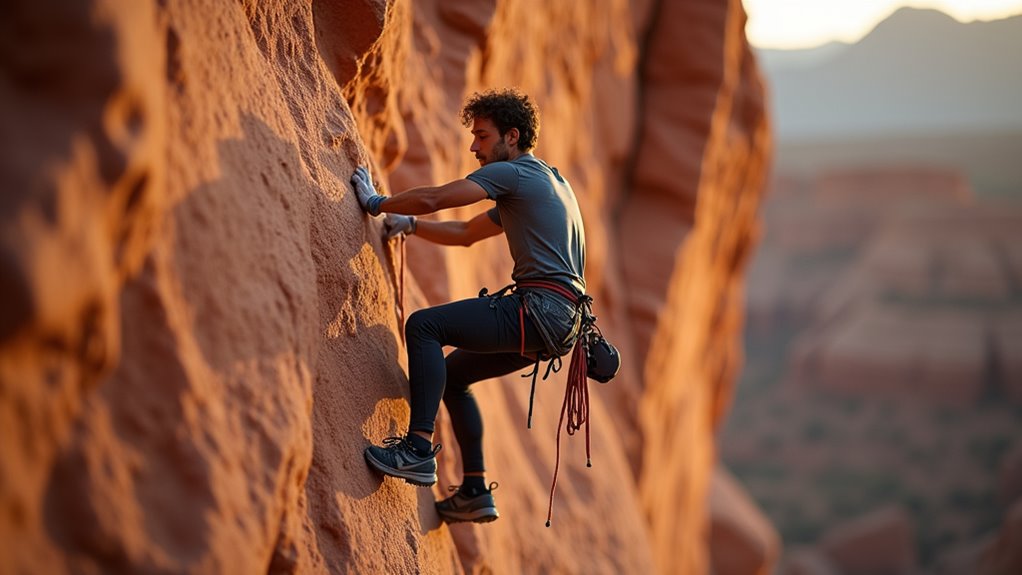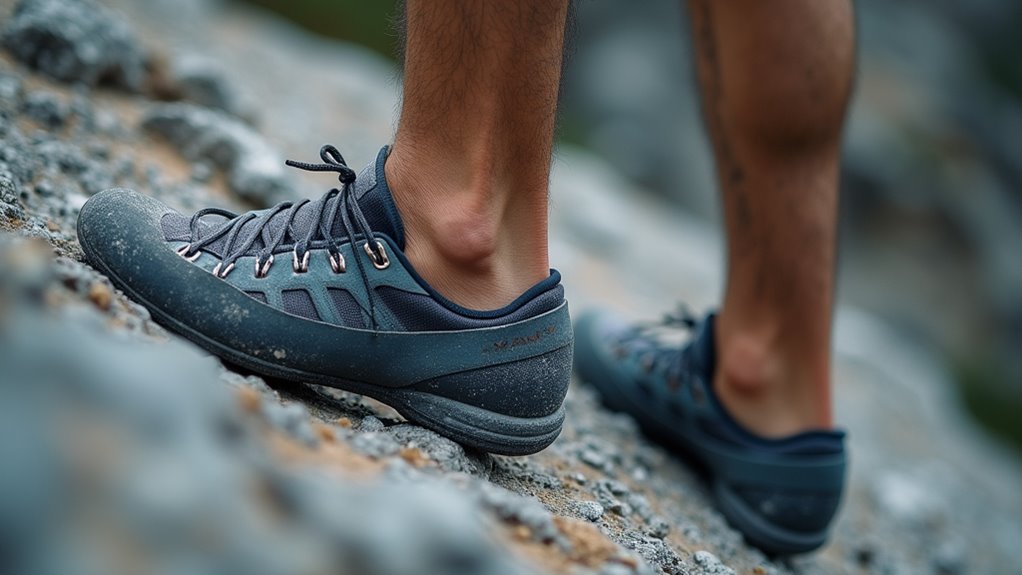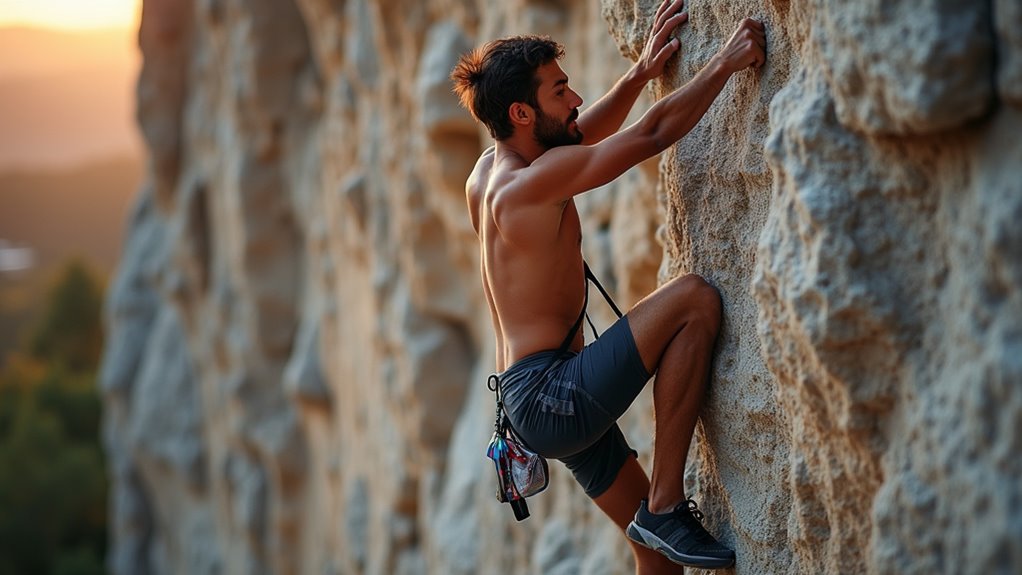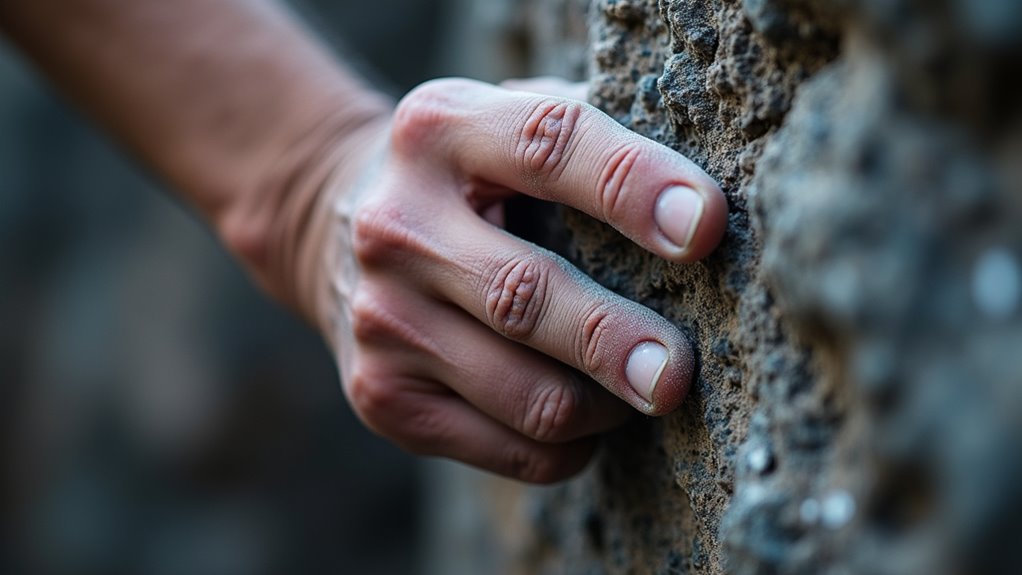Physical Address
304 North Cardinal St.
Dorchester Center, MA 02124
Physical Address
304 North Cardinal St.
Dorchester Center, MA 02124

Better climbing technique beats brute strength—discover eight proven strategies that help smaller climbers effortlessly conquer routes that exhaust stronger athletes.
While novice climbers often focus on building raw strength, experienced climbers know that efficiency trumps power every time. You’ve probably watched someone half your size glide up routes that leave you pumped and struggling, wondering how they make it look so effortless. The secret isn’t in their biceps—it’s in their technique. These eight fundamental strategies will transform how you approach each climb, helping you conserve energy while tackling harder grades with surprising ease.

While many climbers focus on building upper body strength, your feet actually do most of the work in efficient climbing. Think of your feet as precision instruments, not just platforms for balance. Place them deliberately on holds, using the inside edge of your shoe for maximum contact and stability.
Your feet are precision instruments that do the heavy lifting in climbing—treat them as such, not mere balance platforms.
Keep your weight centered over your feet whenever possible. This simple shift reduces strain on your arms and conserves energy for harder moves.
Practice “flagging” – extending one leg as a counterbalance when reaching for distant holds.
Trust your feet completely. Many climbers hesitate or readjust foot placements unnecessarily, wasting precious energy. Once you’ve positioned your foot correctly, commit to it and move confidently to the next hold.
Whether you’re tackling outdoor crags during a camping trip or training at indoor gyms, mastering these footwork fundamentals will dramatically improve your climbing performance.
Before you even touch the first hold, spend time studying the entire route from bottom to top. Look for rest positions, identify crux sections, and plan your sequence. Don’t just see holds—visualize how you’ll move between them. Notice where you can shake out tired arms or reposition your feet.
Experienced climbers read routes like chess players think several moves ahead. They spot potential dead ends before committing energy to them. Study hand placement options and consider multiple sequences for difficult sections.
Ground-up route reading saves energy by preventing wrong turns and dead-end sequences. Practice this skill on easier routes where mistakes aren’t costly. The more you read routes beforehand, the smoother and more efficient your actual climbing becomes. Just as you would research travel insurance before an expedition to ensure you’re covered for climbing activities, thorough route preparation protects you from wasted energy and poor decisions on the wall.

Once you’ve mapped out your route, the next step is making the most of every opportunity to recover during your climb. Smart climbers don’t just power through—they strategically rest to maintain strength and prevent premature fatigue.
Here’s how to maximize your recovery:
Most climbers instinctively bend their arms and pull themselves up the wall, but this approach burns through your strength faster than a cheap candle. Instead, keep your arms straight whenever possible and let your legs do the heavy lifting. Think of your arms as hooks that maintain contact with holds while your legs push you upward.
Engage your core throughout each move to maintain body tension and prevent energy-wasting swinging. A tight core connects your upper and lower body, allowing efficient power transfer from your legs to the rock.
Practice this technique on easier routes first—climb with deliberately straight arms and focus on pressing through your feet rather than yanking with your hands. You’ll climb longer and feel less pumped.
Just like choosing the right camping gear for your adventures, selecting proper climbing equipment that supports efficient movement will enhance your overall performance on the rock.

While smooth movement might look effortless when you watch experienced climbers, it’s actually the result of deliberate practice and strategic route reading. Developing flow means eliminating unnecessary movements and connecting sequences seamlessly.
Focus on these movement fundamentals:
Start by climbing easier routes while focusing solely on smooth progression. You’ll build muscle memory for efficient movement patterns that transfer to harder grades. Many climbers find that practicing flow on natural rock formations, such as those found in state parks, helps develop adaptability and confidence on varied terrain.
How often do you grip holds like your life depends on it, only to find your forearms screaming halfway up the route? That death grip wastes precious energy and stems from mental tension, not actual necessity.
Start by breathing consciously while climbing. Deep, controlled breaths calm your nervous system and prevent panic-induced over-gripping. Before each move, take a moment to assess the hold and grip only as hard as needed.
Practice progressive muscle relaxation off the wall. Tense and release different muscle groups to recognize the difference between necessary and wasteful tension.
On the wall, regularly scan your body—are your shoulders hunched? Jaw clenched? Face scrunched?
Develop pre-climb rituals that center your mind. Visualization, deep breathing, or simple mantras help you approach routes with focused calm rather than anxious energy.
These mental focus techniques become even more critical when tackling challenging ice climbing spots where environmental factors add extra psychological pressure.

Every hold tells a story about the best way to grip it, yet many climbers default to the same hand position regardless of what the rock offers. You’re wasting energy when you fight against the hold’s natural shape instead of working with it.
Smart grip selection saves strength and improves control. Before grabbing any hold, take a split second to assess its features and choose the most efficient grip.
Proper grip techniques are fundamental safety measures that help prevent hand injuries and reduce the risk of falls caused by unexpected grip failure.
Perfect grip technique means nothing if you’re fighting your way up the wall with poor body positioning and jerky movements. Efficient climbing flows like water, with each move setting up the next in a logical sequence.
Smooth, flowing movement trumps raw strength—each position should naturally lead to the next without wasted energy or desperate lunges.
Practice static climbing to build control. Move slowly and deliberately, pausing between each position. This teaches you to find balance points and plan ahead rather than lunging desperately for holds.
Focus on your center of gravity. Keep your hips close to the wall and shift weight smoothly between feet. Your core should drive movement, not your arms.
Study sequences before climbing. Visualize the moves, identifying rest positions and potential challenges. Practice the same routes repeatedly, experimenting with different body positions until you find the most efficient path.
Remember that proper movement technique is just one aspect of climbing, and climbing safety tips are equally important for protecting yourself during practice sessions and challenging climbs.
You’ve got the blueprint for climbing like a telegraph operator sending efficient messages up the wall—every movement deliberate and purposeful. Don’t try to muscle through routes when technique’ll get you higher with less effort. Focus on these fundamentals during your next session, and you’ll notice the difference immediately. Remember, climbing’s more chess match than arm-wrestling contest. Trust your feet, read the rock, and let efficiency become your secret weapon for harder sends.